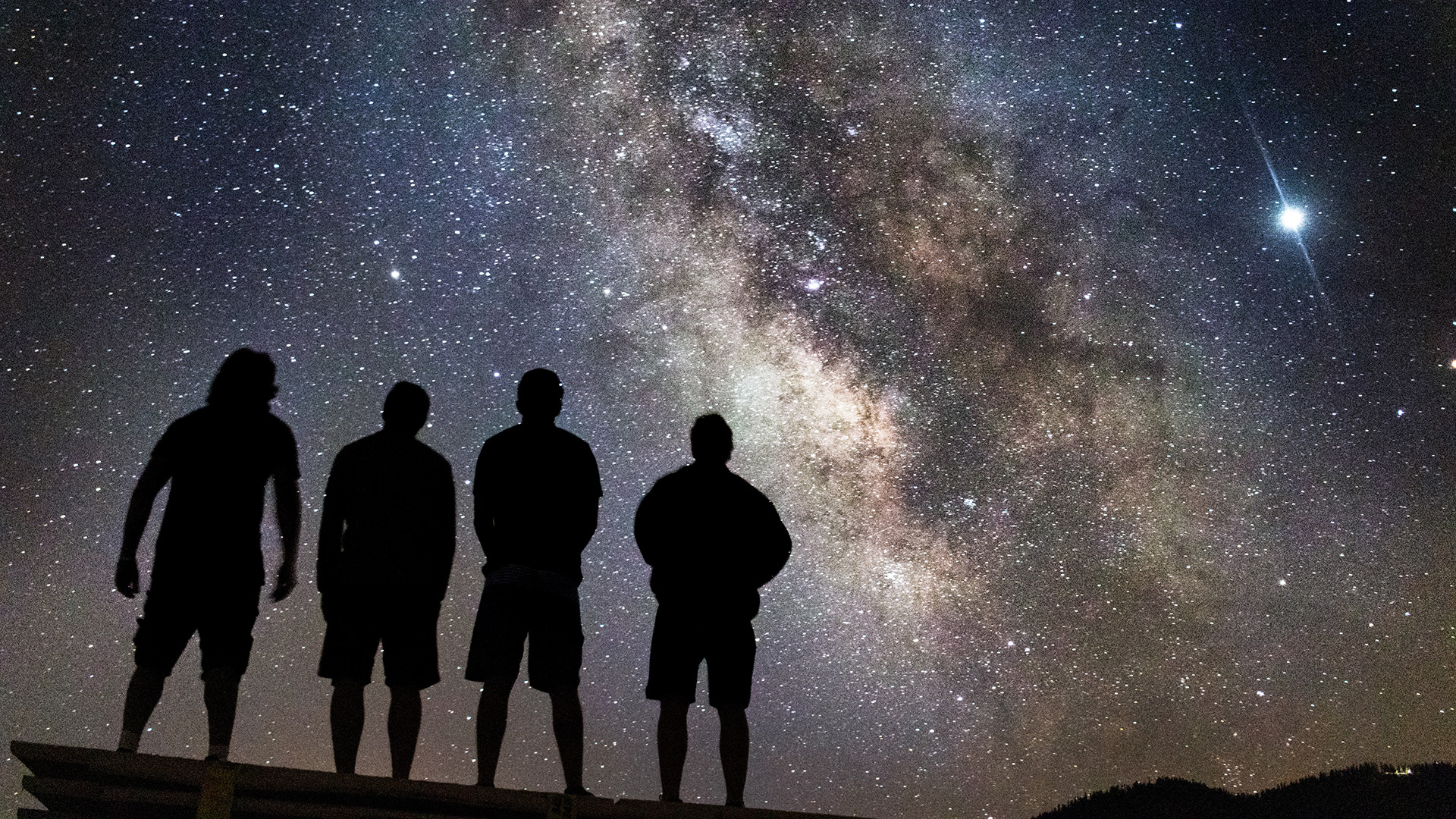Astronomers discover 'Maggie,' a giant atomic cloud stretching across the Milky Way

Stretching thousands of light-years across the Milky Way, a newly discovered filament of hydrogen named Maggie is one of the biggest structures ever discovered in our galaxy, and researchers think there could be others like it.
A group of astronomers led by researchers at the Max Planck Institute of Astronomy (MPIA) in Germany has spotted something strange on the other side of the Milky Way: a massive filament of hydrogen gas. Hydrogen is both the simplest and the most abundant element in the universe. But hydrogen clouds like this filament can be tough to spot amidst the interstellar medium (ISM), the matter and radiation that lies between star systems in a galaxy, the astronomers explain in their study, which was published in December 2021 in the journal Astronomy & Astrophysics.
"Maggie," which is made up almost entirely of atomic hydrogen gas, is a whopping 3,900 light-years long by 130 light-years wide. (For reference, a single light-year is about 5.88 trillion miles, or 9.46 trillion kilometers.)
"In contrast, the largest known clouds of molecular gas typically extend 'only' about 800 light-years across," according to an MPIA statement.
Related: Simple recipe for star formation revealed


In this new study, the team of astronomers used data from the HI/OH/Recombination line survey of the Milky Way, also known as the THOR survey, to investigate Maggie and shed light on large clouds of hydrogen like it.
The team discovered Maggie and, with their work, were able to see how far it stretches, the velocity of the hydrogen gas making it up and more. The astronomers were even able to determine Maggie's distance from Earth, which they estimate is about 55,000 light-years.
Get the Space.com Newsletter
Breaking space news, the latest updates on rocket launches, skywatching events and more!
Typically it is very challenging for astronomers to detect large hydrogen groupings like this, because they don't stand out against the ISM. However, Maggie's unique location helped to make it visible.
"The location of this filament has contributed to this success … we don’t yet know exactly how it got there. But the filament extends about 1,600 light-years below the Milky Way plane," study author Jonas Syed, a PhD student at MPIA, said in the same statement, which added that this location makes it possible for researchers to see radiation emanating from the hydrogen.
Understanding more about Maggie and other structures like it is a major step toward better understanding star formation, as hydrogen is the building block of stars. There remain additional questions about this large filament, like where it came from, but this discovery could lead to many more.
"While Maggie’s origin remains unclear, we hypothesize that Maggie could be the first in a class of atomic clouds that are the precursors of giant molecular filaments," the researchers wrote in their paper.
Email Chelsea Gohd at cgohd@space.com or follow her on Twitter @chelsea_gohd. Follow us on Twitter @Spacedotcom and on Facebook.
Join our Space Forums to keep talking space on the latest missions, night sky and more! And if you have a news tip, correction or comment, let us know at: community@space.com.

Chelsea “Foxanne” Gohd joined Space.com in 2018 and is now a Senior Writer, writing about everything from climate change to planetary science and human spaceflight in both articles and on-camera in videos. With a degree in Public Health and biological sciences, Chelsea has written and worked for institutions including the American Museum of Natural History, Scientific American, Discover Magazine Blog, Astronomy Magazine and Live Science. When not writing, editing or filming something space-y, Chelsea "Foxanne" Gohd is writing music and performing as Foxanne, even launching a song to space in 2021 with Inspiration4. You can follow her on Twitter @chelsea_gohd and @foxannemusic.
